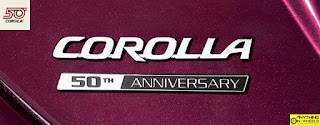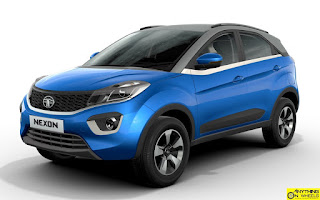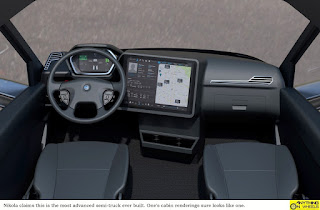After 50 years of production and over 44 million units sold worldwide, the Toyota Corolla needs no introduction. The Corolla is not just the world's largest selling car year over year but also the best selling car ever in automotive history. As Toyota celebrates the 50th anniversary of this iconic car this year, here are some truly staggering figures about the Corolla with some fun facts thrown in for good measure:
Debut
- Toyota Corolla made its debut at the 1966 Tokyo Motor Show
Sales Milestones
- Within 4 years of launch, sales of Corolla reached 1 million units in 1970
- Sales quadrupled over the next 6 years with the Corolla going past the 5 million mark in 1976
- The '10 million' milestone was reached in 1982, just 16 years after the car's launch
- The years 1994, 2005 and 2013 saw sales crossing 20, 30 and 40 million units respectively
- As of September 2016, cumulative global sales of Corolla was a staggering 44.1 million units
- North America has been the biggest market for the Corolla followed by China and Asia (excluding China)
- Roughly 3 out of every 10 Corollas sold have been in Toyota's home market of Japan
- 1 out of every 5 Toyotas on road worldwide is a Corolla, a remarkable achievement for a brand that sells over 40 cars
Production Statistics
- Corolla production started at Toyota's Takaoka plant in Japan in 1966
- Corolla assembly overseas started in Malaysia and Australia in 1968 through CKD kits
- Thailand was the first country outside Japan to produce the Corolla, way back in 1972
- As of 2016, Corollas are being produced in 13 countries and 16 plants
- Of the 44 million Corollas on road, roughly 26 million were produced in Japan with the remaining 18 million coming from outside the country
Fun Facts
- Standing bumper to bumper, the 44.1 million Corollas would cover 5 rounds of the earth
- Toyota sold 1 Corolla every 15 seconds worldwide in 2015
- The total driving distance of the Corollas sold in 2015 would cover more than 50 round trips between the earth and the sun
Having been in existence for five decades, there has been a Corolla for every Tom, Dick and Harry out there. On sale in more than 150 countries right now, this car has seen 11 generations so far and the best part is the Corolla is showing absolutely no signs of slowing down. In fact, it's going from strength to strength.
So, how did the Corolla evolve through the years? Read on, to find out.
The first-generation Corolla (1966 - 1970)
As Japan recovered from the devastating impact of the World War, Toyota realized the need for a car for the masses - a sort of the quintessential 'family car.' The result was the Corolla, which meant "crown of flowers."
Tatsuo Hasegawa, who led the development of the Corolla, came up with a '80-plus points' concept when designing and developing the car. In pursuit of a balanced high score in all areas of development, the Corolla debuted with unmatched practicality and longevity as its major virtues. With a sporty design featuring subtle curves and semi-fastback body style, a newly-developed 'K' model 1,100 cc engine, McPherson strut-based front suspension, floor-mounted gear shift, individual front bucket seats and aluminium enclosures for headlights, the Corolla was well and truly ahead of its time and segment. It's no wonder then the Corolla became Japan's best-seller within 3 years of launch.
Coinciding with the so-called 'age of motorization' and the boom in Japanese economy post-war, the foundation for a truly global automotive success story was set.
Three body styles were offered in the form of a 2-door sedan, a 4-door sedan and a 4-door van.
The second-generation Corolla (1970 - 1974)
Launched in 1970, the second-generation Corolla built on the favourable reputation generated by its predecessor. It was bigger, more powerful and offered more comfort for the customer, thus reinforcing it's position as the perfect car for the family. As it became more popular, the Corolla hit a production and sales milestone of 1 million units that year. The 1.1-liter engine gave way for a bigger 3K 1.2-liter mill. Additionally, 1.4 and 2T-G 1.6-liter engines were also on offer, depending on the variant. Noteworthy was the expansion of sporty Corolla offerings during this period, christened the Corolla Levin.
Four body styles were offered - 2-door sedan, 4-door sedan, 4-door van and coupe. 2.40 million units of these were produced before the third-generation model arrived.
The third-generation Corolla (1974 - 1979)
At a time when the automotive industry was experiencing a turbulent phase, thanks to the oil crisis and the increasing regulations on vehicular emissions, the third-generation Corolla debuted with a bigger, more stylish design and more fuel-efficient engines. For the first time in Corolla's history, wind tunnel studies had been used to tweak the final design. The increase in body size ensured the collision safety standards of the time were met while emission standards were taken care of by Toyota's proprietary Toyota Total Clean System that perfected the catalyst-based exhaust purification system and electronically-controlled fuel injection system.
This was the period when Corolla's exports rose sharply, making it the world's best-selling car for the first time. It's remarkable that the Corolla has been holding on to the tile ever since with it's global success story continuing unabated.
Five body styles - 2-door sedan, 4-door sedan, 4-door van, coupe and 3-door hatchback - were on offer. This model achieved a total production volume of 3.75 million units.
The fourth-generation Corolla (1979 - 1983)
As Japan and the rest of the world was recovering from the oil shock, the design concept of the new model - 'Luxury car status and features, with excellent fuel economy' - matched the needs of the era. This is the only Corolla in history that featured four round headlights and is known for its straight lines and the introduction of a diesel engine in the lineup towards the end of the cycle. Other engines on offer included the 1.3-liter 4K-U, 1.5-liter 3A-U and the sporty 1.6-liter 2T-GEU DOHC mill. This generation also saw the conventional leaf spring-based rear suspension ditched in favour of a 4-link coil with a lateral rod.
Domestic and overseas sales continued to go up with annual exports going past 500,000 units in 1980 and the Corolla surpassing Volkswagen Golf in production volume between 1979 and 1982. During this time, the Corolla's production also reached a significant landmark of 10 million units.
Seven body styles - 2-door sedan, 4-door sedan, van, coupe, hatchback, hardtop and wagon - were on sale during this generation.
The fifth-generation Corolla (1983 - 1987)
This was the time when the Corolla saw a major shift from the front-engine rear wheel drive layout (FR) to the front-engine front wheel drive (FF) layout for the mainstream variants. While the sedan variants adopted the FF layout in pursuit of increased passenger space and seating comfort, the coupe variants persisted with their FR layout for a sporty feel and more driving excitement. A new 1.8-liter engine was added to the existing lineup of 1.3, 1.5 and 1.6 liters. This period also saw the birth of the legendary FR 86, a sort of a cult within Toyota, featuring a new 4A-G 1.6-liter DOHC engine.
Corollas in every conceivable body type - 4-door sedan, 5-door sedan, 2-door coupe, 3-door coupe, 3-door hatchback, 5-door hatchback, wagon and van - were on sale during this period!
The sixth-generation Corolla (1987 - 1991)
'To go beyond the norms of the class' was the intent behind the development of the sixth-generation model. As a result, this generation of Corollas were lower, wider and employed rounded lines for that sleek high-class look. These Corollas were known for their exceptional quality, high performance and, dare we say, fun to drive characteristics. The engine lineup featured 1.3, 1.5 and 1.6-liter petrols and a 1.8-liter diesel. Believe it or not, a full-time 4WD system was part of the drivetrain lineup, the first time in a Corolla!
Updated strut-type suspensions for all four wheels, an electronically-controlled variable damping force damper called the TEMS (Toyota Electronic Modulation System), soft-touch materials at critical places in the cabin, lumbar and side support for front seats with full-flat reclining option - you name it and this Corolla had it almost 30 years back.
Body styles included a 4-door sedan, a 2-door coupe, a 3-door hatchback, a 5-door hatchback, a van and a wagon.
The seventh-generation Corolla (1991 - 1995)
Corolla of this generation was more of an evolution of the sixth-generation model, albeit with 'dramatic improvements made on every aspect' as Toyota proudly declares. Quality levels were remarkably high throughout and it wouldn't be an exaggeration if we tell you that this generation of the Corolla played a key role in cementing the image that Japanese cars enjoy today. The economic downturn in Japan meant sales dropped in Toyota's home market but export business remained brisk with the Corolla and its derivatives clearly the world's best-selling nameplate by now. Five petrol engines with 1.3, 1.5 and 1.6 liter displacements and a 2.0-liter 2C diesel engine were the power choices available.
Passenger safety got a fillip with features like Antilock Braking System (ABS), Supplementary Restraint System (SRS) Airbag for the driver, side impact beams and high-mounted stop lamp appearing on Corollas for the first time.
Six body variations, including a sedan, a 2-door coupe, a van, a wagon, a 3-door hatchback and a 4-door hardtop, were available with this generation.
The eighth-generation Corolla (1995 - 2000)
As the Corolla grew bigger and more luxurious with each passing generation, it was starting to stray away from the original's concept of a simple and convenient compact car. The eighth-generation Corolla returned back to the roots by being sleeker and lighter. Engine lineup continued to be the 1.3, 1.5 and 1.6-liter mecha twin-cam units with the flagship model getting the 4A-G 1.6-liter DOHC VVT mill. Diesel option continued to be the 2.0-liter 2C-III unit.
In addition to the sedans, coupes and wagons we know, new body types like the Corolla Seres 4-door hard top and the Corolla Spacio MPV were brought in to the lineup to make it a complete family of models.
The ninth-generation Corolla (2000 - 2006)
This was the 'coming of age' of the Corolla brand from being a safe, no fail option in Toyota's lineup to the one that defined the 21st century compact car. Every aspect of the car was developed from scratch with a design that was more European than ever. Sales slumped in Japan due to prevailing conditions but the demand in the United States of America, Europe and the rest of Asia, particularly China, meant that the volumes were never threatened. The powertrain lineup was upgraded using a variable valve timing and lift mechanism (VVT-i) in 1.3, 1.5 and 1.8-liter configurations while the diesel engine was also boosted with 2.2-liters of displacement. New age safety features like Vehicle Stability Control (VSC), Traction Control System (TCS) were employed for the first time on a Corolla during this period.
The coupe model (Levin) was discontinued with the launch of this generation while the lineup was rejigged to include sedan, wagon (Fielder), 3-door and 5-door hatchbacks, MPV (Spacio) and a new derivative model in the Japan and the United States dubbed the Matrix.
For the first time ever, the Corolla, hitherto a popular private import option in the country, was officially launched in India. The North American version was the one that made it here and, needless to say, it set new standards for quality and reliability soon after its launch.
The tenth-generation Corolla (2006 - 2013)
Debuting on the 40th anniversary of the original, the necessity for Toyota to develop the Corolla with a global point of view and a global scale was felt more than ever. For instance, the dynamics were tuned with European customers in mind, the space and practicality aspects had the American customers covered while quality and reliability continued to be top notch as ever.
India continued to be in the scheme of things with Toyota launching the European version of the tenth-generation Corolla here with the suffix Altis. The Altis went straight to the top of the sales charts as soon as it was launched, a position the Corolla hasn't relinquished in the Indian market yet.
The eleventh-generation Corolla (2013 - Present)
With a daring and aggressive design, the current generation Corolla broke away from the mold of staid and boring designs of the past. With renewed focus on chassis dynamics and distinct designs for each of the three regions where the car is a best-seller, the Corolla of today truly represents the DNA inherited over the last five decades of existence.
A face-lifted version has just made its debut and, lest we forget, the Corolla is still the best-selling car in the world.
That's some history there! Few cars on earth can boast the legacy or replicate the popularity of the Corolla. As often said, reaching the top is one thing, but staying there is a different thing altogether. Kudos Toyota, for staying at the top for five decades with the Corolla and managing the success so well so far!
Corolla 50th Anniversary Edition (USA)
As part of the celebrations, Toyota had rolled out a limited "50th Anniversary" Edition of the Corolla in the United States of America, the car's biggest and most important market. Limited to just 8,000 units, the 50th Anniversary Edition gets an exclusive 'Black Cherry Pearl' exterior colour, all black interiors with contrasting black cherry stitching on the seats, gear shifter and arm rest, black cherry theme on the dash panel and door trim, unique floor mats and a badge on the boot.
No, you can't buy one of these now. We are sure all of these are already sold out. But wait, the Corolla is fast approaching the '50 million' landmark and, with no other automobile in history reaching that milestone, Toyota might spring a grand surprise to mark the occasion!












































